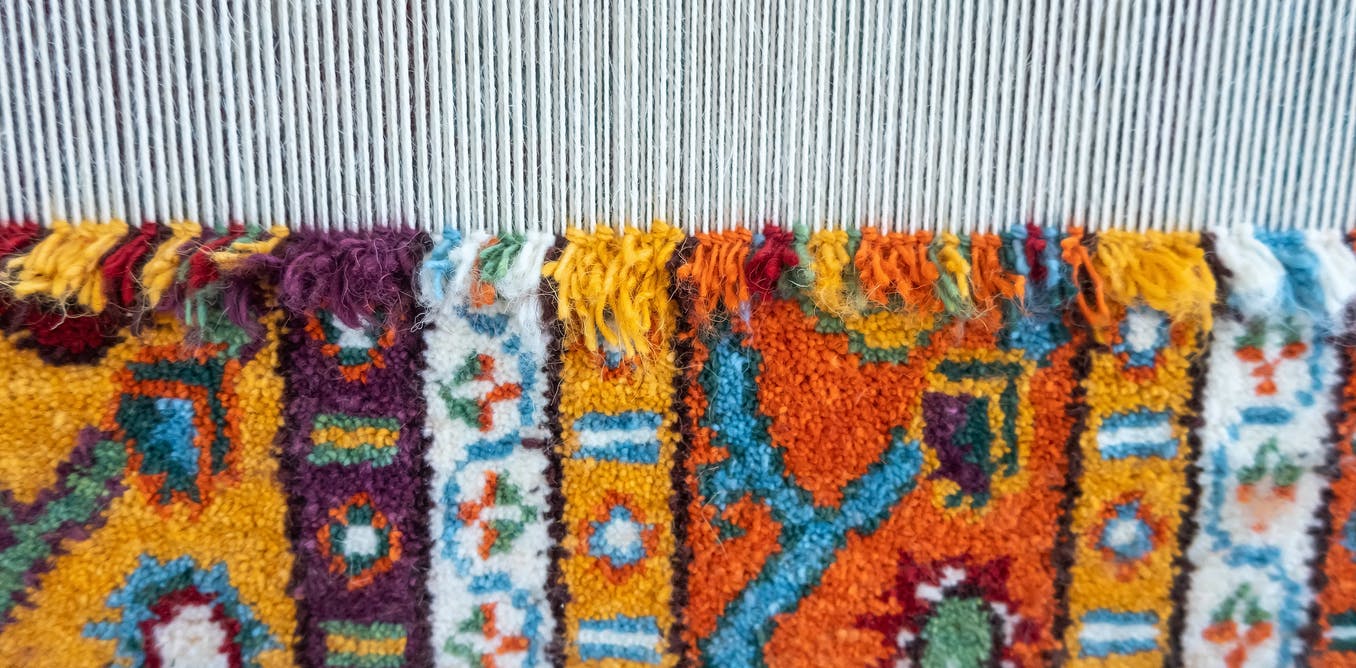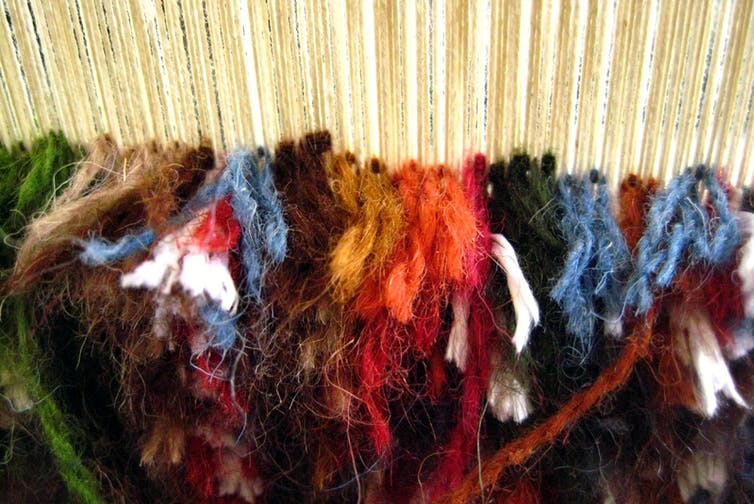How we think about immunity can help us navigate COVID-19 risks together

Back in February, Peter Jüni, then scientific director of Ontario’s Scientific Advisory Table, stated on a CBC Radio call-in show that, “We are continuing to weave a carpet of immunity.”
As a health humanities researcher working on how COVID-19 informs our cultural imagining of immunity, I was struck by Jüni’s metaphor. Now, with his impending departure coinciding with the end of mask and vaccine mandates, I find myself considering the metaphor anew.
At a time when authorities are advising individuals to make their own risk assessments as we head into a sixth COVID-19 wave, public health messaging has never been more important.
Jüni’s metaphorical “carpet of immunity” conjured up an image of something meticulously crafted and spreading protectively over our region. It also illustrated how the language of public health can invite the public to think differently about immunity, a complex biological system that the pandemic has thrust into daily life.
Language, metaphor and health
As we head into a potential sixth wave of COVID-19, individuals are being told to make their own risk assessments.
THE CANADIAN PRESS/Jonathan Hayward
Language matters. Theorists have been making this argument for decades in relation to cancer, AIDS and the cultural representation of disease more generally. Language can often distort our understanding of fundamental concepts of health and medicine, especially in the case of immunity.
Philipp Dettmer, founder of YouTube science education channel Kurzgesagt and author of Immune, says of immunity:
“… people lack a good mental image of what the term means. They think of it as an energy shield that you can charge up. But it is not a thing at all, it’s a multitude of things.”
As a way of making sense of something we can’t see, metaphor often mediates our understanding of immunity. Seeking a more fitting way of imagining immunity, Eula Biss, author of On Immunity: An Inoculation, proposes the naturalistic image of the “garden” as an alternative to the standard fortress metaphor. The garden image (based on an ecological understanding of immunity) suggests something in between the natural and the artificial. As Biss explains:
“The antibodies that generate immunity following vaccination are manufactured in the human body, not in factories. Using ingredients sourced from organisms, once living or still alive, vaccines invite the immune system to produce its own protection.”
Vaccines are not perfectly natural, but neither are they “unnatural,” despite the arguments of wellness communities. In rejecting vaccines, these groups tend to glorify an idea of bodily purity based on the frequent misappropriation and misrepresentation of Eastern spirituality.
This notion of the individual body’s ability to boost its “natural immunity” has further fed resistance to public health measures and restrictions.
Weaving the carpet
A garden by its very nature is cultivated but can quite easily run wild if left untended. But a “carpet that we weave together” elegantly evokes labour and artistry. In suggesting that we have a role in crafting something rather than simply being acted upon by a virus, this phrasing offers an antidote, perhaps, to the pandemic-induced feelings of disempowerment seemingly fuelling anti-mandate demonstrations.

Viewing immunity as a carpet that we weave together evokes labour and artistry, and suggests we have a role in crafting something rather than simply being acted upon by a virus.
(Wikipedia Commons/Fulvio Spada), CC BY
This metaphor also sidesteps the divide between the artificial and the natural by intertwining both forms of immunity (acquired through either exposure to infection or vaccination) into something figuratively spun on a loom.
Jüni’s metaphor also seemed strategic in its reassuring domesticity: what is more commonplace than a carpet? In this sense, “carpet immunity” rejects politicians’ standard militaristic imagery of vaccines as a front line of defence against COVID-19 and its variants.
In its banality, the image captured what it means to live with the virus. In a biological sense, we “live with” the virus through our immune systems, which had an opportunity to get acquainted with SARS-CoV-2 under the controlled conditions afforded by mandates and vaccine rollouts.
Immunity as a shared goal and responsibility
From the early days of the pandemic, public health struggled with its messaging around mandates. But Jüni’s metaphor clearly calls on us to work together. Emerging from the pandemic, this formulation emphasizes mutual responsibility and invites us to think of immunity in social terms rather than simply individual terms.
However, this is a more difficult undertaking than one might expect. Immunity is informed by and layered over with political and legal meanings stretching as far back as ancient Rome and filtered through Enlightenment thought.
As gender studies professor Ed Cohen reflects in A Body Worth Defending, an idea of “immunity-as-defence” charged with maintaining clear boundaries around the individual has been fixed in western thinking since the 19th century.

Anti-vaccination discourse positions the robust, sovereign body as impervious to both infection and accountability.
THE CANADIAN PRESS/Lars Hagberg
Interestingly, the “immunity as carpet” phrasing has to date been applied to immunity in precisely this original, legal sense. A quick Google search reveals multiple usages of the phrase “red carpet of immunity” to signify the exemption of high-profile politicians and executives from prosecution. In this double sense, anti-vaccination discourse positions the robust, sovereign body as impervious to both infection and accountability.
Yet scientists’ imagining of collective immunity posits exactly the opposite of exemption (in a social rather than medical sense). “We are all in this together,” we are told, with the same basic biology, entangled by webs of contact and the traces we leave behind.
The idea of “carpet immunity” captures the varied complexities of shared immune systems. It is in its own way a unifying image in the weaving together of infection- and vaccination-induced antibodies. Taken together, these antibodies may over time give our society some measure of protection against Omicron, its currently surging subvariant BA.2 and subsequent strains of the novel coronavirus.
Read more:
How new COVID-19 variants emerge: Natural selection and the evolution of SARS-CoV-2
Finally, “a carpet we weave together” evokes an image of artisans working in close proximity to create something both functional and ornamental. This collectivist metaphor offers an esthetically appealing alternative to the more familiar “herd immunity” increasingly seen as out of reach. It invites us to imagine immunity as a collaborative project, spreading out to protect those among us for whom the end of mandates means increased vulnerability.
Most importantly, this language challenges us to imagine what a post-pandemic future might look like if we commit to continuing to craft a “carpet of immunity” through vaccination, rather than unravelling it while it remains a work in progress. As Peter Jüni prepares to step down from the Ontario COVID-19 Science Advisory Table, he leaves behind a model for how effective public health messaging can reshape ideas about both our bodies and our communities and affect our everyday practices (if we choose to listen).






